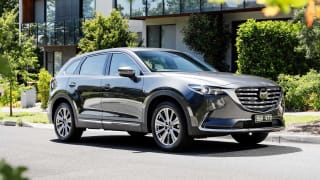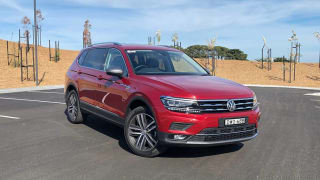Priced from $61,070, plus on-road costs, the GT-Line petrol sits second from the top of the Sorento range, with only its diesel counterpart going $3000 higher.

The GT-Line's generous standard equipment list includes, four drive modes ('Eco', 'Comfort', 'Sport' and 'Smart'), dusk-sensing LED headlights, rain-sensing wipers, 'Dark Chrome' 20-inch alloy wheels (with a full-size spare), auto-folding side mirrors with heating, roof rails, keyless entry, rear privacy glass, and a hands-free power-operated tailgate.
Inside, add push-button start, a 10.25-inch touchscreen multimedia system, satellite navigation, (wired) Apple CarPlay and Android Auto support, digital radio, a 12-speaker Bose sound system, a 12.3-inch digital instrument cluster, a windshield-projected head-up display, a wireless smartphone charger and a panoramic sunroof feature.

And then there’s the heated steering wheel, dual-zone climate control, heated and cooled front seats, heated outboard middle seats, 14-way power-adjustable driver’s seat, 10-way power-adjustable front passenger seat, auto-dimming rearview mirror, black quilted Nappa leather-appointed upholstery, ambient lighting and second-row sunshade blinds.
Seven paintwork options are available, with our test vehicle finished in 'Snow White Pearl', which costs $695 extra, bringing the price as tested to $61,765.
For reference, the Sorento GT-Line petrol’s direct rival is the related Hyundai Santa Fe Highlander petrol ($61,700), while it also faces competition from the Mazda CX-9 Azami FWD ($66,190) and Volkswagen Tiguan Allspace 162TSI Highline ($53,190).
























